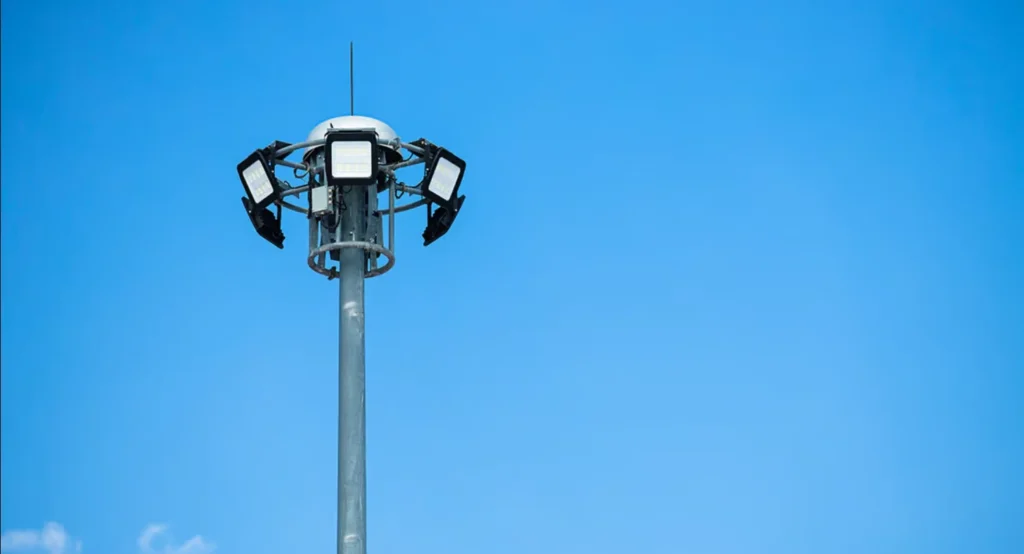Índice
ToggleLa importancia de conocer las bombillas
Puede resultar abrumador enfrentarse a la enorme variedad de formas, tamaños de casquillo, tipos y códigos de bombillas. La eficiencia lumínica y el atractivo estético se ven muy afectados por estos matices, que van desde determinar qué es una bombilla de tipo B hasta elegir el tamaño de casquillo perfecto.
En esta extensa guía se aborda desde los códigos y tipos de bombillas hasta las mejores opciones para las distintas aplicaciones. Aprenda cómo Productos de iluminación de LedRhythm cambiar cualquier área fusionando eficiencia e innovación. Más información blanco suave vs luz día vs blanco cálido o quién inventó la bombilla.

Tipos de bombillas
Formas de bombillas: Existen muchos tipos de bombillas en el mundo. Las formas de las bombillas se agrupan según su uso y finalidad. Por ejemplo, los tipos A, B, C, CA, F, G, R, PS, etc.
Códigos de forma de las bombillas: Las letras suelen representar la forma de la bombilla (A, B, C, PAR, MR...), y los números suelen representar el tamaño (diámetro o longitud, que puede ser en milímetros o 1/8 pulgadas).
- Bombilla tipo A
Forma: La forma de bombilla doméstica más clásica y versátil, parecida a una pera. - Bombilla tipo B
Forma: Alargada, cilíndrica o ligeramente cónica, a menudo con la parte superior puntiaguda o redondeada para simular una vela. - Bombilla tipo C
Forma: Más curvada que la del tipo B, con una forma de llama distintiva y normalmente una parte superior puntiaguda. - Bombilla tipo G
Forma: Forma esférica estándar. - Bombillas R & BR
Forma: Tipo R: Ancha en la base, estrecha en el extremo del cristal, con un reflector poco profundo y un haz más ancho. Tipo BR: Una versión mejorada del tipo R, con una "protuberancia" en el cuello y un reflector más profundo, lo que resulta en un haz más concentrado y uniforme. - Bombilla tipo PS
Forma: Similar a la forma de pera del bulbo tipo A, pero las proporciones pueden diferir ligeramente, siendo a veces más redondeadas o alargadas.

A continuación se indican algunos tipos típicos de bombillas:
| Forma | Descripción | Aplicaciones |
|---|---|---|
| En forma de A | Bombillas redondas tradicionales | Lámparas de mesa, iluminación general del hogar |
| Bombillas globo | Bulbos grandes y esféricos | Espejos de tocador, accesorios ornamentales |
| Bombillas Candelabro | Delgado, en forma de torpedo | Lámparas de araña, apliques de pared |
| Bombillas reflectoras | Revestimiento reflectante para una iluminación focalizada | Luces empotradas, focos |
| Bombillas tubulares | Largo y estrecho | Electrodomésticos e iluminación bajo los armarios |
Conozca las dimensiones del casquillo de la bombilla
El tamaño del casquillo de una bombilla, que la une a la luminaria, es esencial para la compatibilidad. Diferentes tamaños de casquillo deben utilizarse con diferentes tipos de bombillas. Comprender los tamaños de los casquillos es crucial a la hora de elegir una bombilla. Más información sobre tipos y códigos de casquillos de bombillas.
1. Casquillo mediano (código de casquillo de bombilla E26):
El casquillo E26 es uno de los estándares de casquillo de bombilla más extendidos en el mundo, especialmente en Norteamérica, Japón y partes de Asia.
Denominación: E26, "E" = tornillo Edison, "26" = diámetro de rosca 26 mm.
E26 es un casquillo universal que puede adaptarse a diversas formas de bombilla. Es el tamaño de casquillo de bombilla más utilizado en las instalaciones domésticas. Lo contienen las bombillas A19 y otras alternativas comunes. Por ejemplo:
| Forma de la bombilla | Código | Aplicaciones típicas |
|---|---|---|
| Tipo A | A19, A21 | Iluminación principal de salones y dormitorios |
| Tipo BR | BR30, BR40 | Downlights de techo |
| Tipo PAR | PAR20, PAR38 | Focos de exterior, focos de escenario |

2. Base Candelabro (bombillas E12):
Una base más pequeña que es ideal para los accesorios que son pequeños. Se encuentra con frecuencia en las bombillas candelabro.
3. Base bipolar:
Este tipo de casquillo, que suele encontrarse en bombillas especiales, tiene dos patillas diminutas que son perfectas para necesidades de iluminación pequeñas y focalizadas.
Bombilla de tipo B: ¿Qué es?
"Las bombillas tipo B son bombillas candelabro, llamadas así por su forma alargada, estrecha y similar a la llama de una vela. Se trata de una de las muchas formas estándar de bombillas. Se encuentra con frecuencia en las bombillas candelabro.
- Casquillo de rosca pequeño: Esta es una característica muy común de las bombillas de tipo B.
En el mercado norteamericano, el casquillo tipo B más común es el E12 (casquillo candelabro), que tiene un diámetro aproximado de 12 mm. Se trata del casquillo pequeño estándar utilizado en aparatos de iluminación decorativos, como lámparas de araña y apliques de pared. - Iluminación decorativa: Esta es la principal aplicación de las bombillas de tipo B. La bombilla de tipo B es ideal para instalaciones estéticas, ya que es fina y ornamental.
Se utilizan ampliamente en lámparas de araña, apliques y lámparas de techo, lámparas de mesa, lámparas de cabecera, luces de pasillo e iluminación de armarios.
B10 contra E12
B10 y E12 son conceptos completamente diferentes. B10 se refiere a la forma de la bombilla, mientras que E12 se refiere al tipo de casquillo, por lo que no se pueden comparar directamente.
Sin embargo, B10 y E12 son la combinación más común, y las bombillas B10 suelen utilizarse en casquillos E12.
Pero no se engañe pensando que una bombilla B10 sólo funciona con un casquillo E12. B10 sólo define la forma y el diámetro; el casquillo puede ser E12, E14 o B15d.


Estudio de las dimensiones del casquillo de la bombilla Candelabro
Las bombillas candelabro suelen referirse a las bombillas con forma de vela, como las de tipo B y C. El tamaño del casquillo es el parámetro más crítico a la hora de comprar. Elegir el incorrecto provocará fallos en la instalación. A continuación se detallan los principales tipos de casquillos de bombillas candelabro existentes en el mundo. A continuación se presenta un análisis detallado:
Base E12 (estándar norteamericano: base de candelabro)
- Nombre: Tornillo Edison 12mm.
- Diámetro de la rosca: 12 mm (≈0,47″).
- Regiones comunes: Norteamérica, Japón, Taiwán, etc.
- Bombillas compatibles: Tipo B, Tipo C, Bombillas G Pequeñas, Mini Bombillas Decorativas
Base E14 (Norma europea/internacional: tornillo Edison pequeño)
- Nombre: Tornillo Edison 14mm.
- Diámetro de la rosca: 14 mm (≈0,55″).
- Regiones comunes: Europa, Reino Unido, Australia, China y la mayoría de las demás regiones del mundo.
- Bombillas compatibles: Candelabros tipo B, C y bombillas G45.
¿Las bombillas candelabro LED tienen la misma base que las bombillas incandescentes?
¡Absolutamente idénticas! Las bombillas candelabro LED utilizan los mismos estándares de casquillo (E12/E14), por lo que son un sustituto directo.

Descifrar los códigos de las bombillas
Los códigos de las bombillas (como A19, BR30, PAR38) son designaciones estándar del sector que se corresponden directamente con su forma, tamaño y características. Saber descifrarlos te ayudará a identificar de un vistazo las especificaciones clave a la hora de elegir una bombilla.
La parte de la letra representa la forma de la bombilla. Por ejemplo:
| Código | Nombre completo de la forma | Nombre común | Aspecto típico |
|---|---|---|---|
| A | Arbitrario | Estándar / Forma de pera | Bombilla doméstica clásica en forma de pera |
| B | Bala o punta roma | Bala / Punta | Cilindro delgado con parte superior puntiaguda o redondeada |
| C | Vela o cono | Forma de vela | Forma de llama curvada, imita una vela |
| G | Globo | Forma de globo | Forma esférica perfecta |
| BR | Reflector abombado | Tipo reflector abombado | Para iluminación empotrada, cuello abombado |
| PAR | Reflector parabólico aluminizado | Reflector parabólico | Haz de enfoque potente, cristal resistente con estrías |
La parte numérica indica el tamaño de la bombilla, diámetro real (mm) = número × 1/8 pulgada(≈ 3,175 mm), por ejemplo tabla de tamaños de bombillas:
| Código | Cálculo (pulgadas → milímetros) | Diámetro real |
|---|---|---|
| A19 | 19 × 3,175 ≈ 60 mm | ≈ 60 mm |
| B10 | 10 × 3,175 ≈ 32 mm | ≈ 32 mm |
| BR30 | 30 × 3,175 ≈ 95 mm | ≈ 95 mm |
| PAR38 | 38 × 3,175 ≈ 121 mm | ≈ 120 mm |
Relación entre las formas de las bombillas y los tipos de casquillo
La forma de la bombilla y el tipo de base son dos dimensiones completamente independientes y no existe ninguna relación obligatoria entre ellas.
Las bombillas y los casquillos se pueden combinar de cualquier forma, como la ropa y los botones. Las bombillas candelabro de tipo B vienen con más casquillos que las de la serie E. Por ejemplo:
- La bombilla B10 puede combinarse con casquillos E12, E14, BA15d o GU10.
Por lo tanto, los casquillos de una misma bombilla pueden variar no sólo en tamaño sino también en tipo, así que tenga cuidado al comprar.
Designaciones de diámetro y longitud de las bombillas
Para elegir la bombilla adecuada para su instalación, le resultará más fácil conocer las designaciones de diámetro y longitud de las bombillas. Gracias a estas especificaciones, la bombilla encajará correctamente y producirá el efecto de iluminación deseado.
Designaciones de diámetro (en pulgadas)
El diámetro de las bombillas, medido en octavos de pulgada, se utiliza con frecuencia para describirlas. Por ejemplo:
- A19: 19/8 pulgadas, con un diámetro de 2,375 pulgadas
- B10: 10/8 pulgadas, con un diámetro de 1,25 pulgadas
- PAR38: 38/8 pulgadas, con un diámetro de 4,75 pulgadas
Designaciones de longitud (pulgadas)
La longitud de una bombilla también influye en su capacidad para encajar en los portalámparas. Los nombres comunes son:
- A19 - 4,5 pulg.
- T8: 48 pulgadas (para tubos fluorescentes)
- PAR30: 3,75 pulgadas
Elegir la bombilla ideal para una habitación pequeña o una zona con techos altos puede ser más fácil si conoce estas medidas.
Recapitulemos
Las bombillas y los tipos de casquillo habituales en los distintos países son diferentes. Seleccionar la solución de iluminación ideal es más fácil si se conocen las formas de las bombillas, los tamaños de los casquillos, las designaciones de diámetro y longitud, y los códigos. Desde las elegantes bombillas de tipo B hasta las polivalentes bombillas A19, LedRhythm ofrece soluciones creativas y energéticamente eficientes para todas las aplicaciones.
La gente también pregunta
¿Describir las formas de las bombillas?
- Tipo A (en forma de pera), como la A19
- Tipo B (delgado, puntiagudo en forma de vela)
- Tipo C (en forma de llama curva)
- Tipo G (esférico)
- Tipo BR (reflector convexo)
- Tipo PAR (enfoque preciso)
- Tipo MR (reflector multifacético)
¿Cómo funcionan los tamaños de los casquillos de las bombillas?
Hay muchos tamaños de casquillos de bombilla, y hay que elegir según el tipo de lámpara. De lo contrario, la bombilla no coincidirá con la base. Por ejemplo, casquillos E12, E26.
¿Describa una bombilla de tipo B?
Delgada y ornamental, la bombilla de tipo B se utiliza a menudo con casquillos candelabro.
Cómo entender los códigos de forma de las bombillas?
Los códigos de forma de las bombillas constan de letras y números. Las letras representan diferentes formas de bombilla y los números representan diferentes diámetros de bombilla.
La misma letra puede aparecer en varias combinaciones de números, que representan distintos tamaños de bombilla para la misma forma.








